Florence, the Museo degli Innocenti and its unique history
In Florence, the Museo degli Innocenti is located in a peculiar context. In fact, the museum is located inside the Renaissance building designed by Filippo Brunelleschi, the headquarters of theIstituto degli Innocenti, a foundation that has worked uninterruptedly for six hundred years to defend and promote the rights of children and adolescents. The Institute’s artistic heritage has been preserved and displayed since 1860 within the walls of one of the city’s oldest and most characteristic Renaissance buildings.
In 15th-century Florence, which could boast of a solid welfare network, the care of abandoned infants was the prerogative of theArte della Seta, one of the Arti Maggiori, or the various guilds of the city’s workers (the silk guild brought together the manufacturers, merchants and fabric sellers, as well as the mattress makers, hatters, stocking makers, gunsmiths, merchants and even goldsmiths). Initially foundlings were taken in at the Hospital of St. Gall, located outside the city, to which the Hospital of Santa Maria della Scala, which was closer, was preferred. In order to better meet the needs of reception, L’Arte decided to have a new building constructed, and so, in 1419, the General Council of the Arte resolved to build the new dispensary, thanks to a bequest of 1,000 florins from the Prato merchant Francesco Datini, with which a vast piece of land in the Piazza dei Servi, belonging to one of the leading figures in the Florentine republican government, Rinaldo di Maso degli Albizi, was purchased.
The direction of the building site was entrusted in 1419 to the Florentine architect Filippo Brunelleschi, who probably had no role in finalizing the plan of the building, which had already been under construction for two years. Work continued under Brunelleschi’s direction until 1427, and the construction of the church of Santa Maria degli Innocenti, the children’s dormitory, the basement, and the portico is placed in this period. The architect was not constantly present on the building site because of the numerous commitments in which he was involved by the Florentine Republic, foremost among them the construction of the dome of Santa Maria del Fiore; it is the facade that is the only part of the complex that can definitely be attributed to Brunelleschi, which today presents itself with an appearance that does not conform to the initial design of thearchitect, which can probably be seen in the building depicted in Benozzo Gozzoli’s fresco, the Esequie di Sant ’Agostino (1464-1465), in the church of Sant’Agostino in San Gimignano, which was intended to provide for a simpler structure without a central floor.
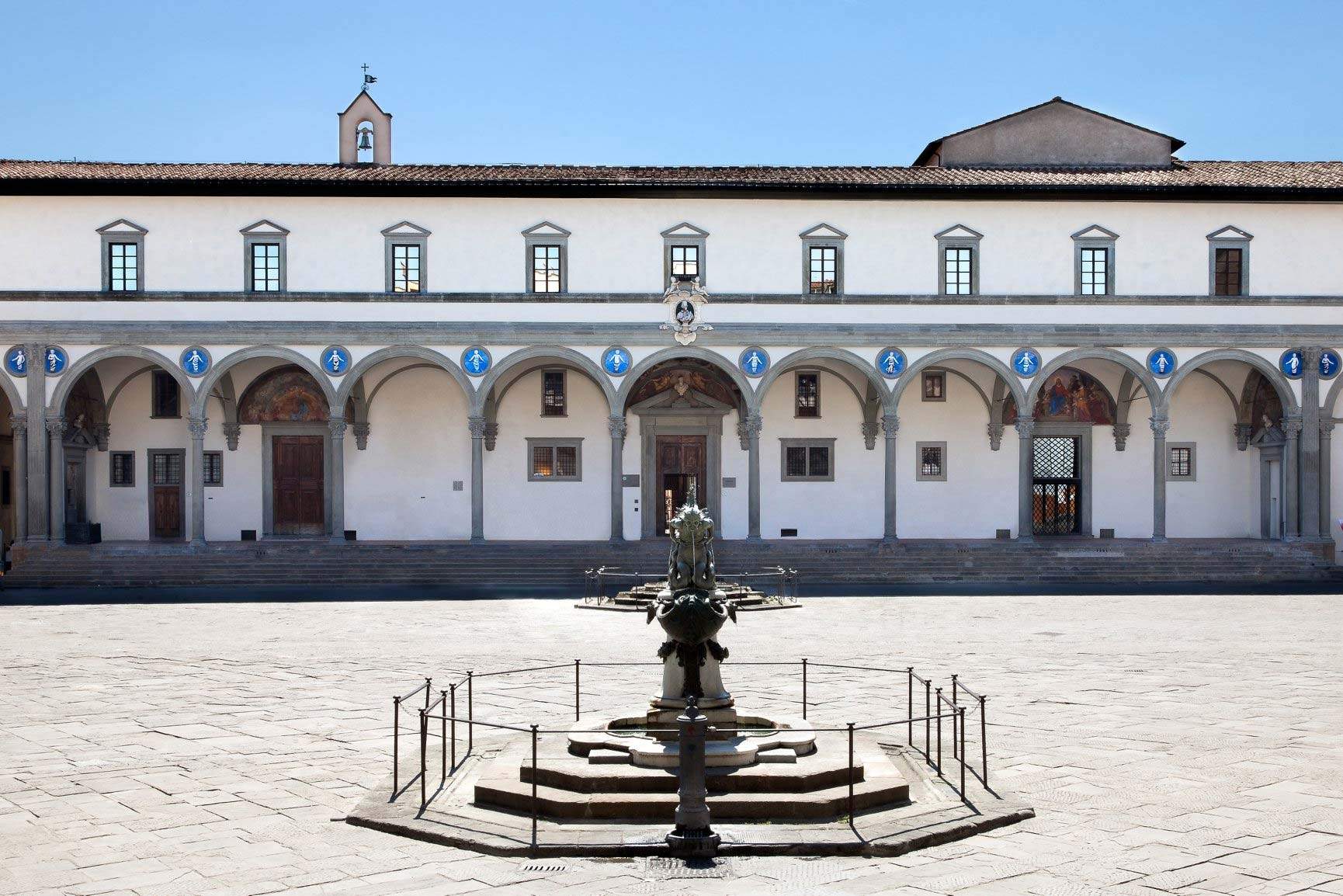
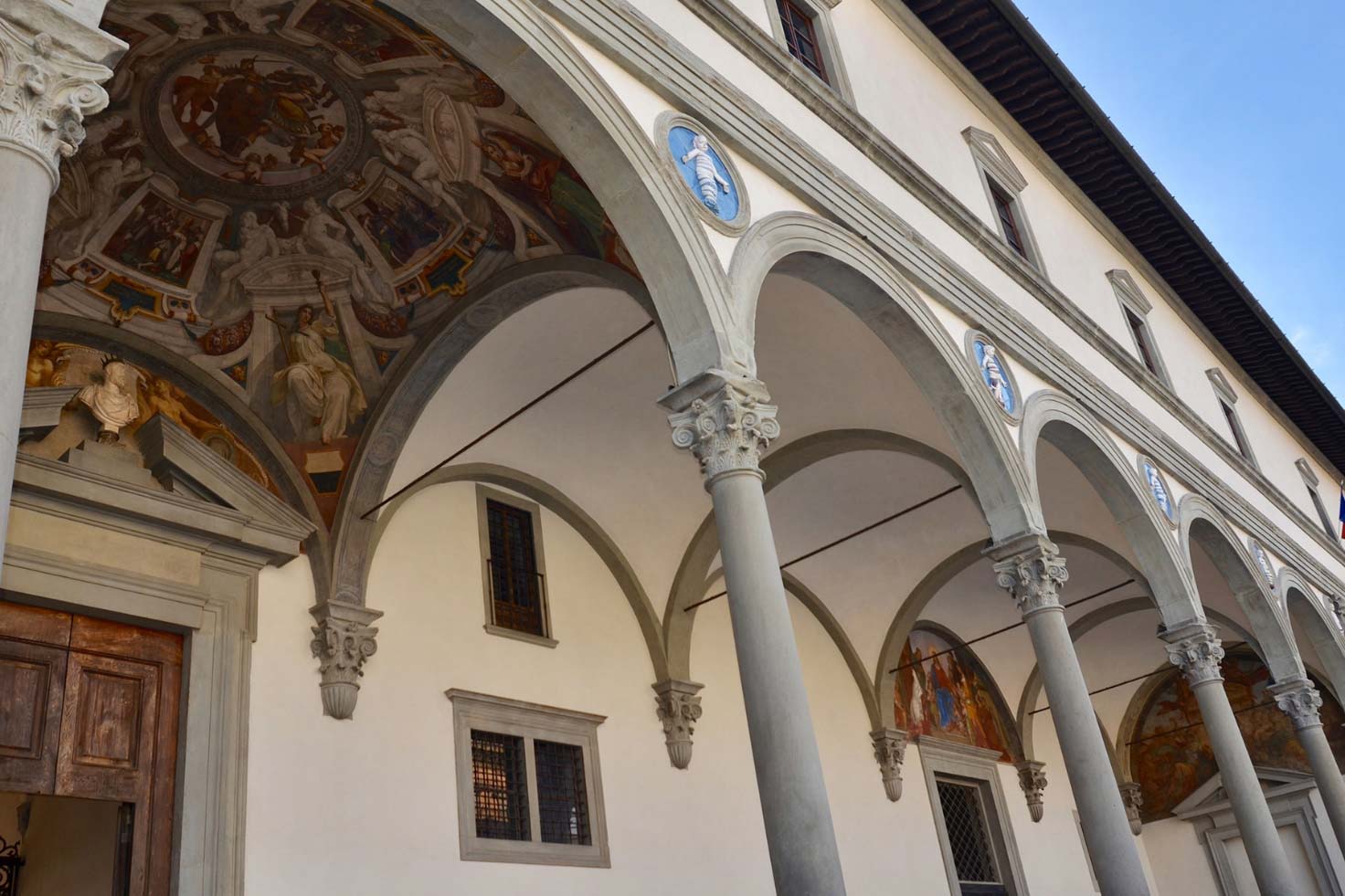
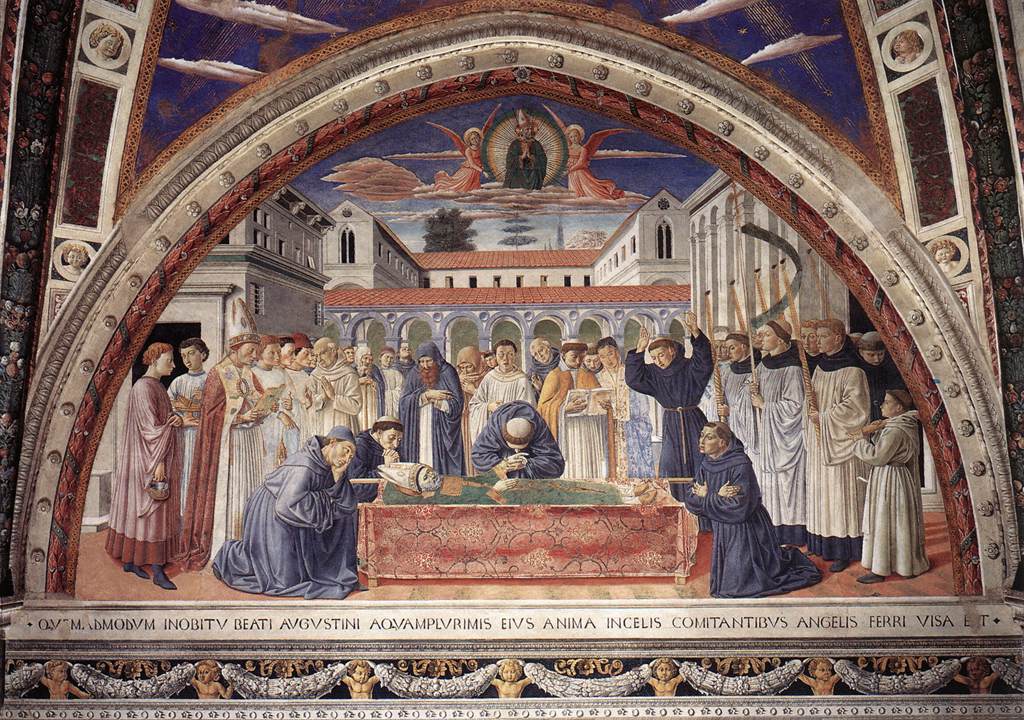
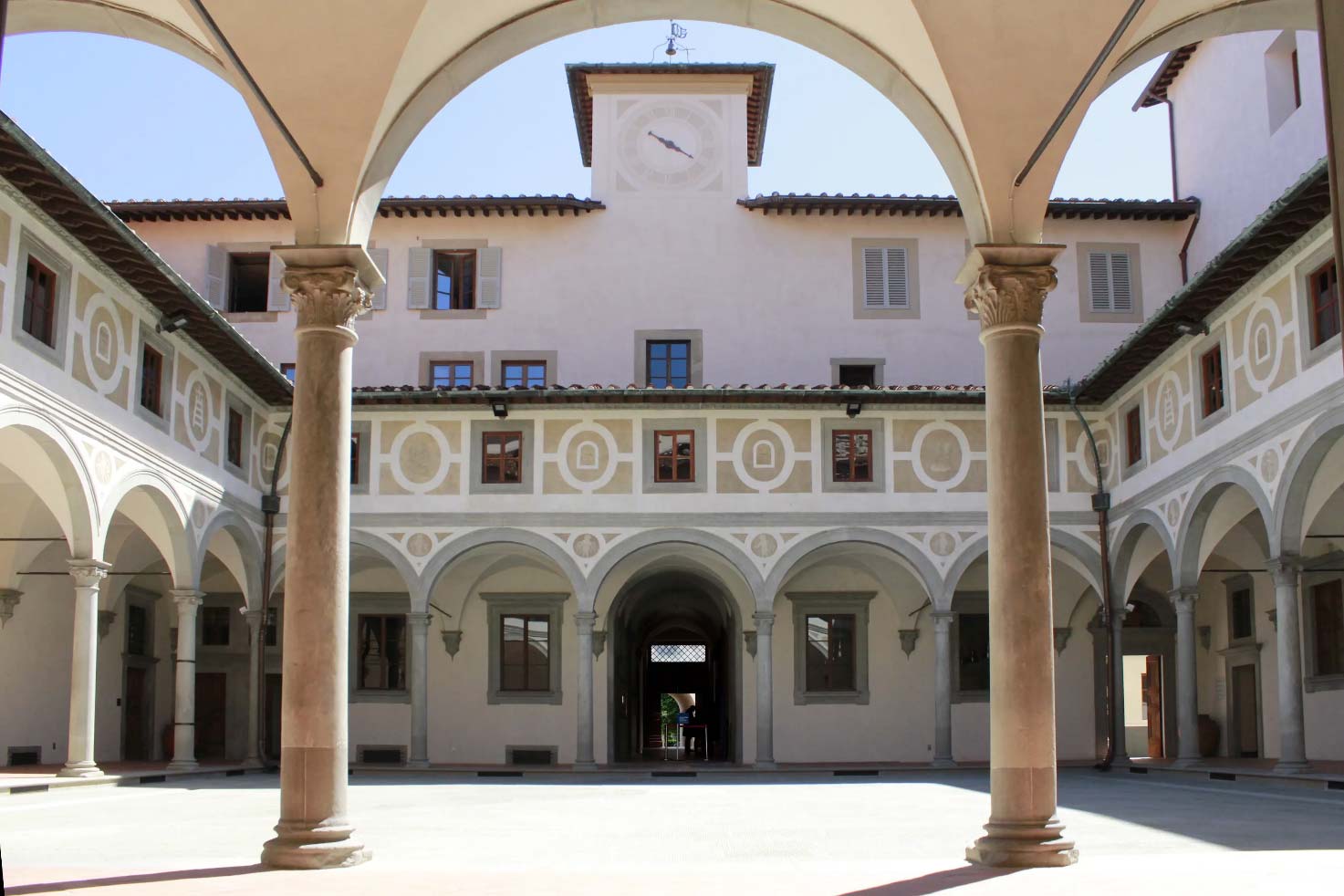
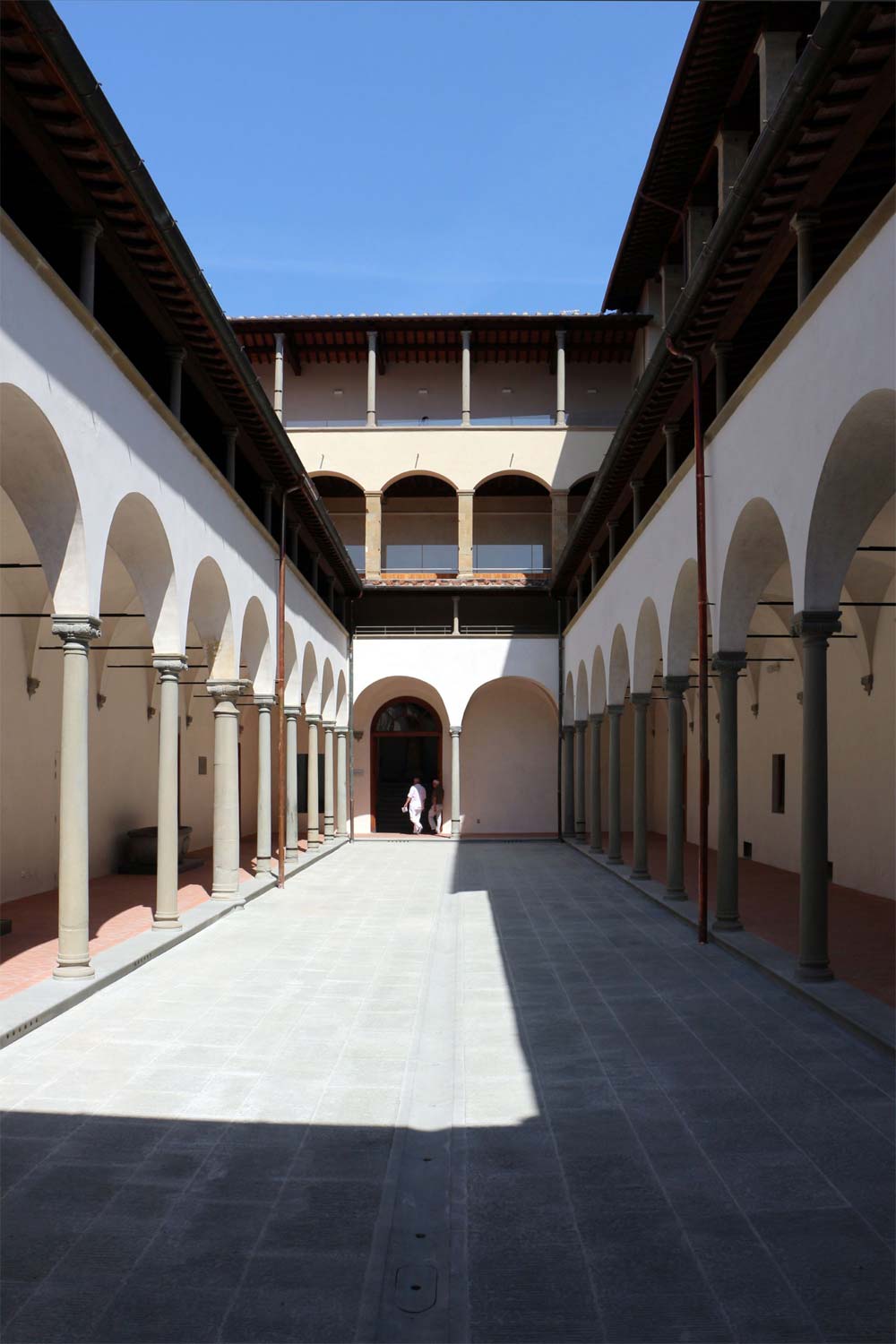
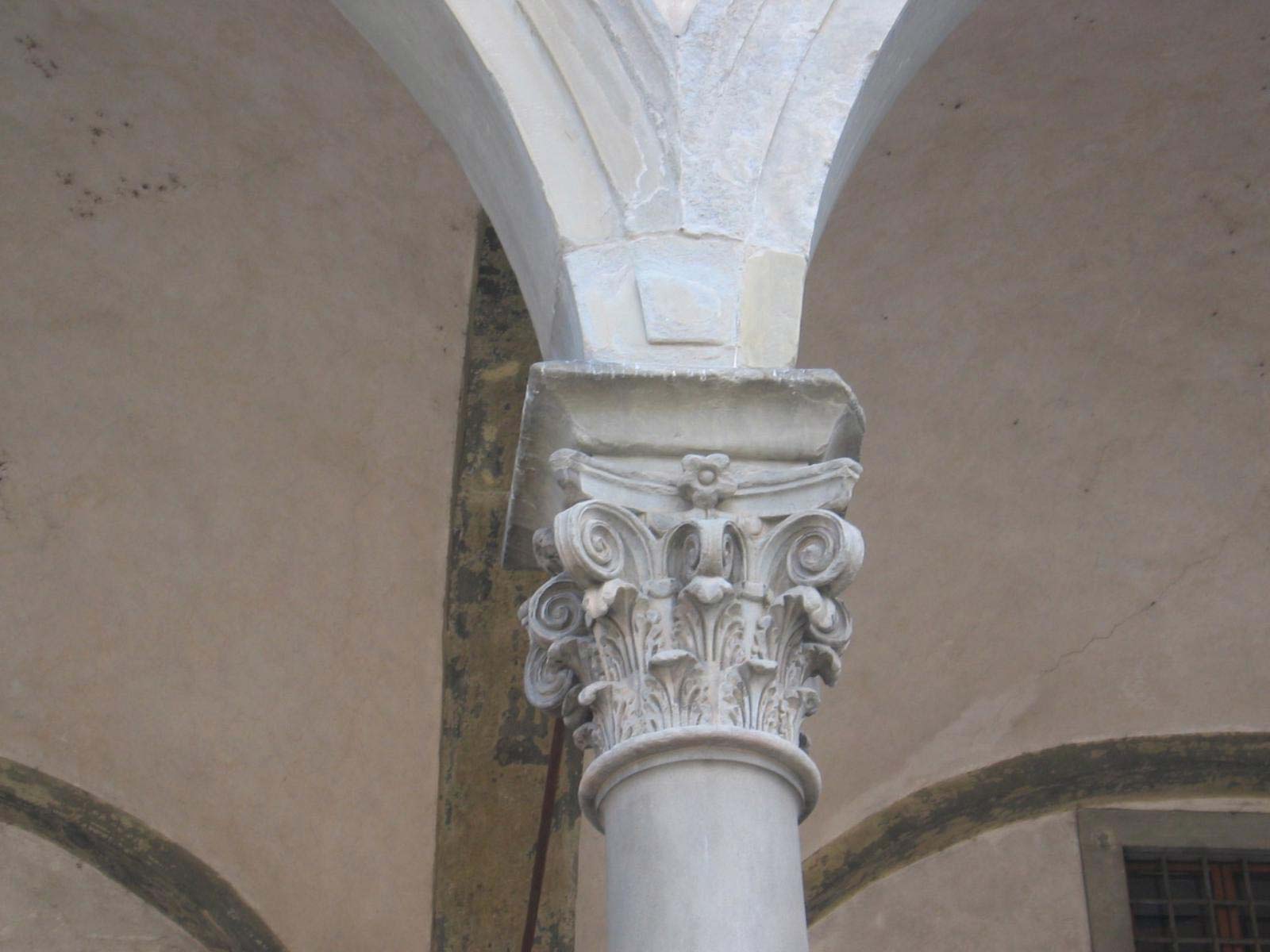
The façade, elevated from the level of the square by a staircase composed of nine steps, features an open loggia. The decision to build an elevation with arches on columns is in the tradition present in Tuscany of hospitals and charitable structures built in similar forms, such as the coeval Spedale di Sant’Antonio, in Lastra a Signa. In order to keep costs down, inexperienced workers were employed in the work, and often also volunteers who wished to participate in this charitable action; it therefore became necessary to simplify the construction techniques, which Brunelleschi carried out through the elaboration of a module, that is, a unit of measurement, in this case the height of the column, to which all the other components of the building were proportionally related. The architect’s solution, in addition to simplifying the work, also contributed to the harmonious and orderly appearance of the facade. Breaking away from the traditional fourteenth-century use of cross vaults, ribbed vaults were built in the porticato degli Innocenti, erected thanks to a wooden framework, which was much lighter than that required for the construction of cross vaults, and which could be quickly moved for the construction of the next vault, taking less time and resources. For the building, the choice was made to use pietra serena, or “boulder,” a rather soft and light type of stone that was cheap to quarry and easier to work than the traditional, and expensive, pietra forte.
All these choices gave the opportunity to save money to invest in the creation of ornamental elements, such as cornices and capitals, which were made by looking at and reinterpreting ancient tradition. In the capitals, in Corinthian style, the foliage is simplified and reduced, while the volutes are very large, so much so that they recall those of the capitals in composite style, of which Brunelleschi has clear examples in the church of San Salvatore al monte. Also introduced is the pulvinus, an element of Byzantine origin, which, usually placed below the volutes, is instead freely placed by the architect above them. Of medieval derivation is the choice of making aedicule windows surmounted by a tympanum, placed on the second floor, which is widely used in Tuscan Romanesque buildings, as in the façade of the abbey of San Bartolomeo in Fiesole. Concluding the portico are pilasters that have six flutes, contrary to the ancient example where they are always present in odd numbers, employed to support an entablature that acts as a string-course between the portico level and the second floor. The entablature does not end with a final pilaster, but with an architrave that turns downward, a singular solution compared to ancient principles, probably observed in the same form in the Florence Baptistery. The use of this solution, little appreciated by Brunelleschi, as reported by Giorgio Vasari and Antonio di Tuccio Manetti in their biographies, will be attributed to Francesco Della Luna, a Florentine politician linked to the Arte della Seta and to the architect himself, who will designate him as his successor to superintend the project.
By 1427, in fact, Brunelleschi’s name was no longer on the books of the Spedale, and the direction of the building site was entrusted to Della Luna, under whom work resumed in 1435 after a period of stagnation due to economic difficulties. Under his direction the entire second order, also visible from the facade thanks to the pietra serena cornice, was built, housing a large inner hall. With a design by Brunelleschi largely reinterpreted by Della Luna, the Cortile degli Uomini (Men’s Courtyard) was built, later completed in 1470 by the architect Stefano di Jacopo Rosselli, which was also followed by the second courtyard of the Spedale, the Cortile delle Donne (Women’s Courtyard), thus endowing the structure with large spaces that children could use for their games. In 1487 the emblematic glazed ceramic medallions made by Andrea della Robbia were inserted into the spandrels of the loggia arches, depicting putti in swaddling clothes, each immortalized in a different position, which later became the coat of arms of the Istituto degli Innocenti. Around 1610 frescoes were made by Bernardino Poccetti, in exchange for hospitality at the Spedale, in the vault and side lunettes of the loggia, as well as in the Women’s Refectory, now the Poccetti Hall, where we can admire, among the Gospel narrative of the Massacre of the Innocents, a very interesting account of life inside the institute.
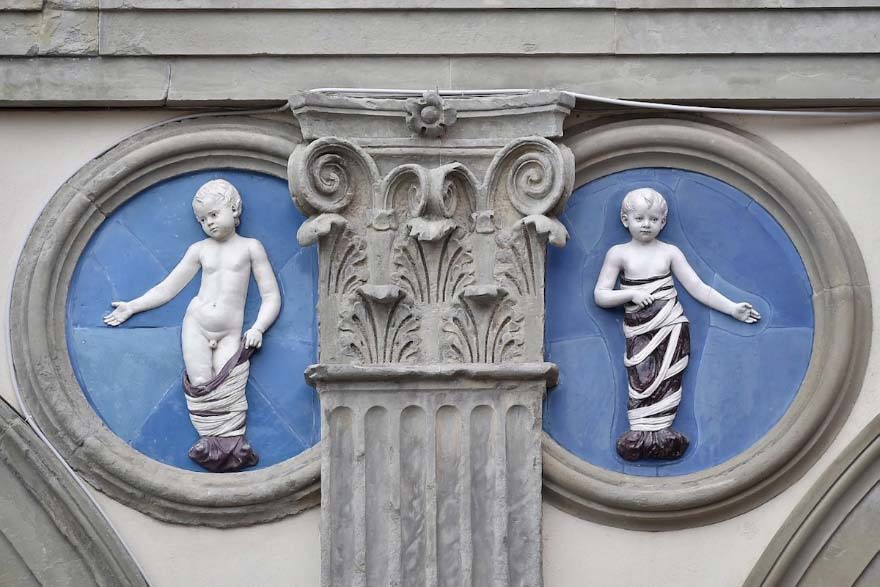
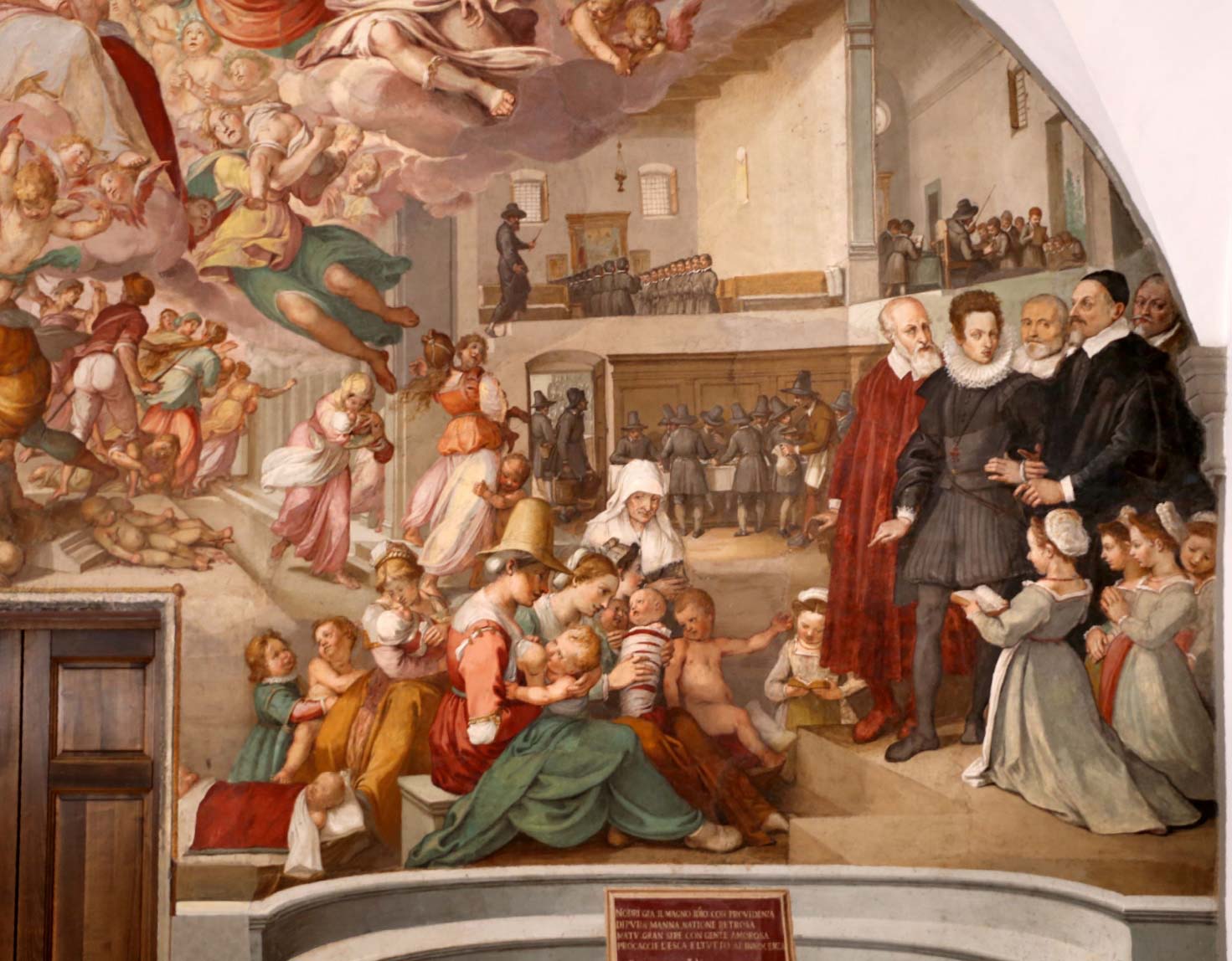
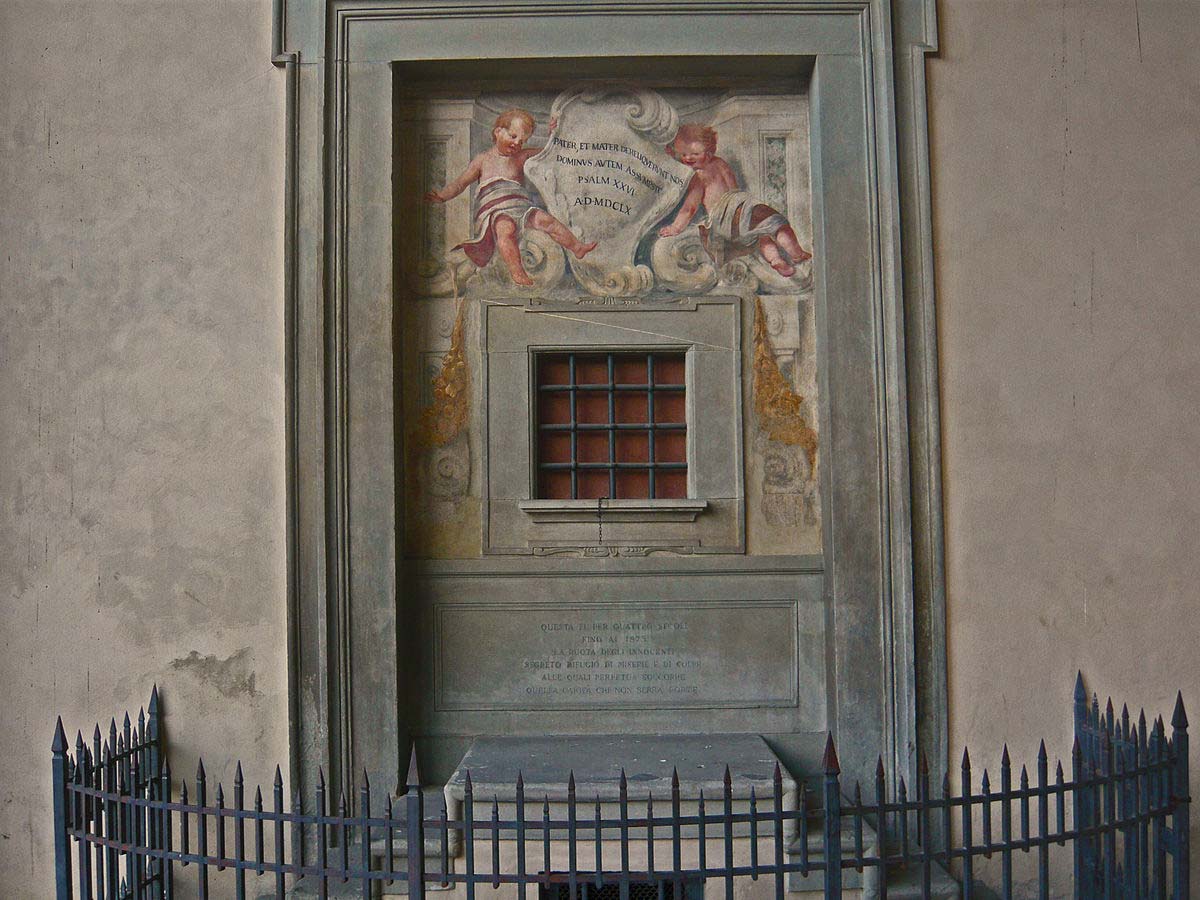
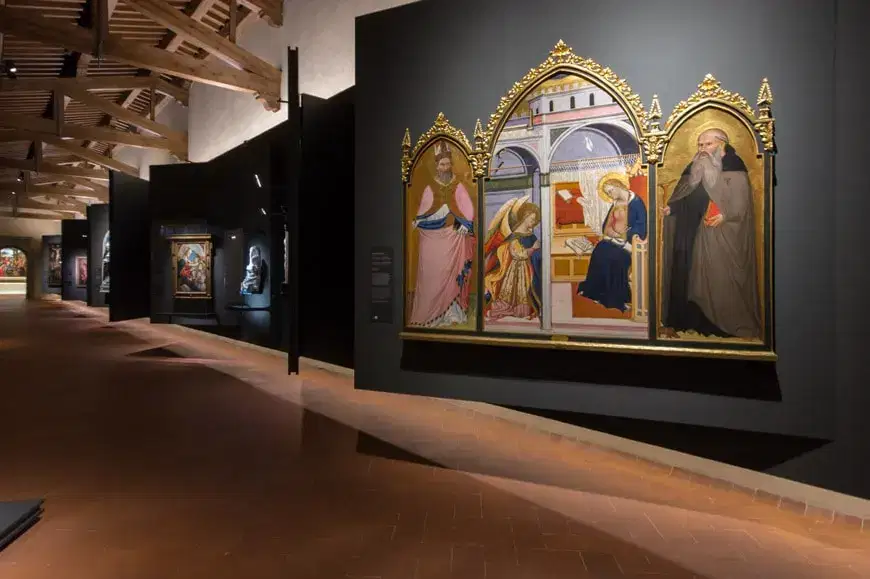 Exhibits
Exhibits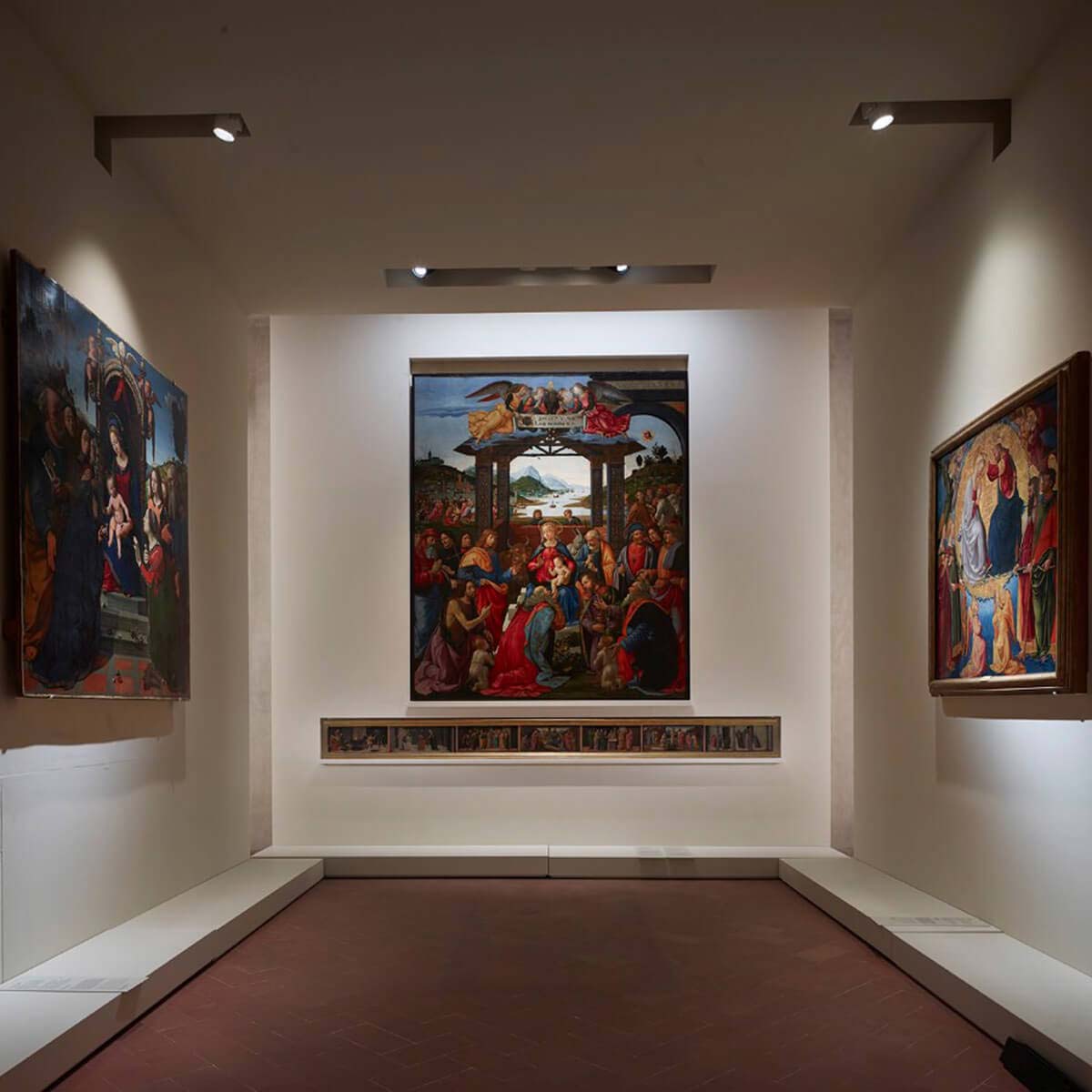
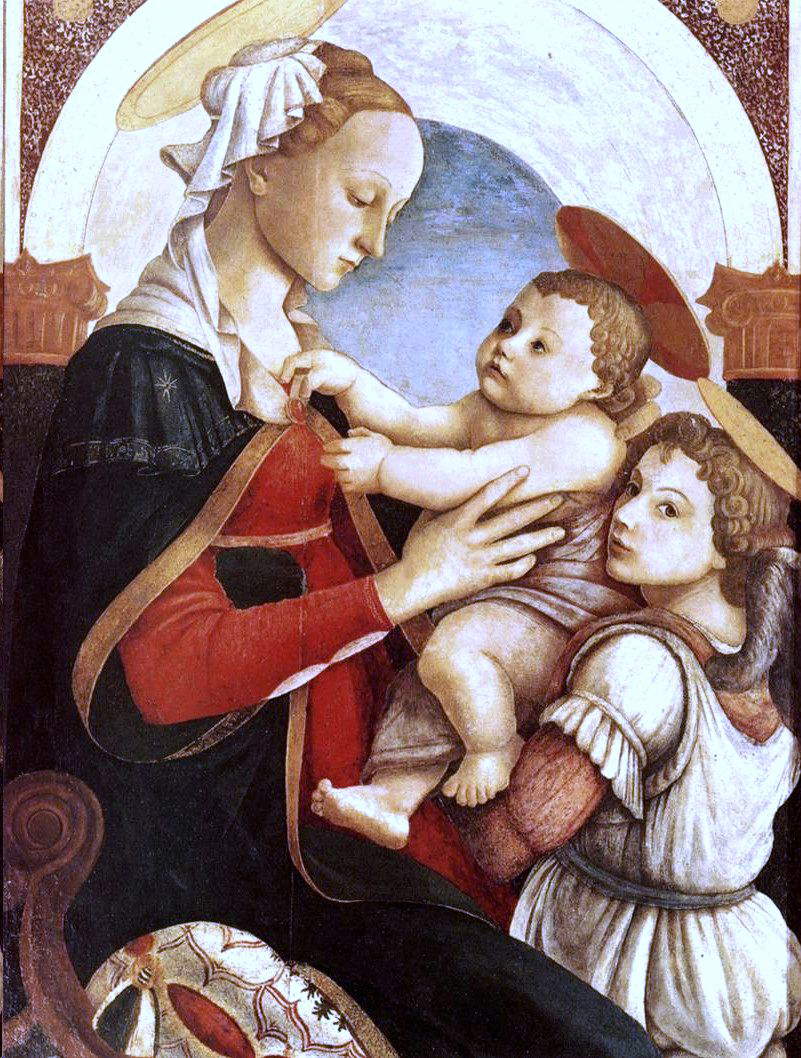
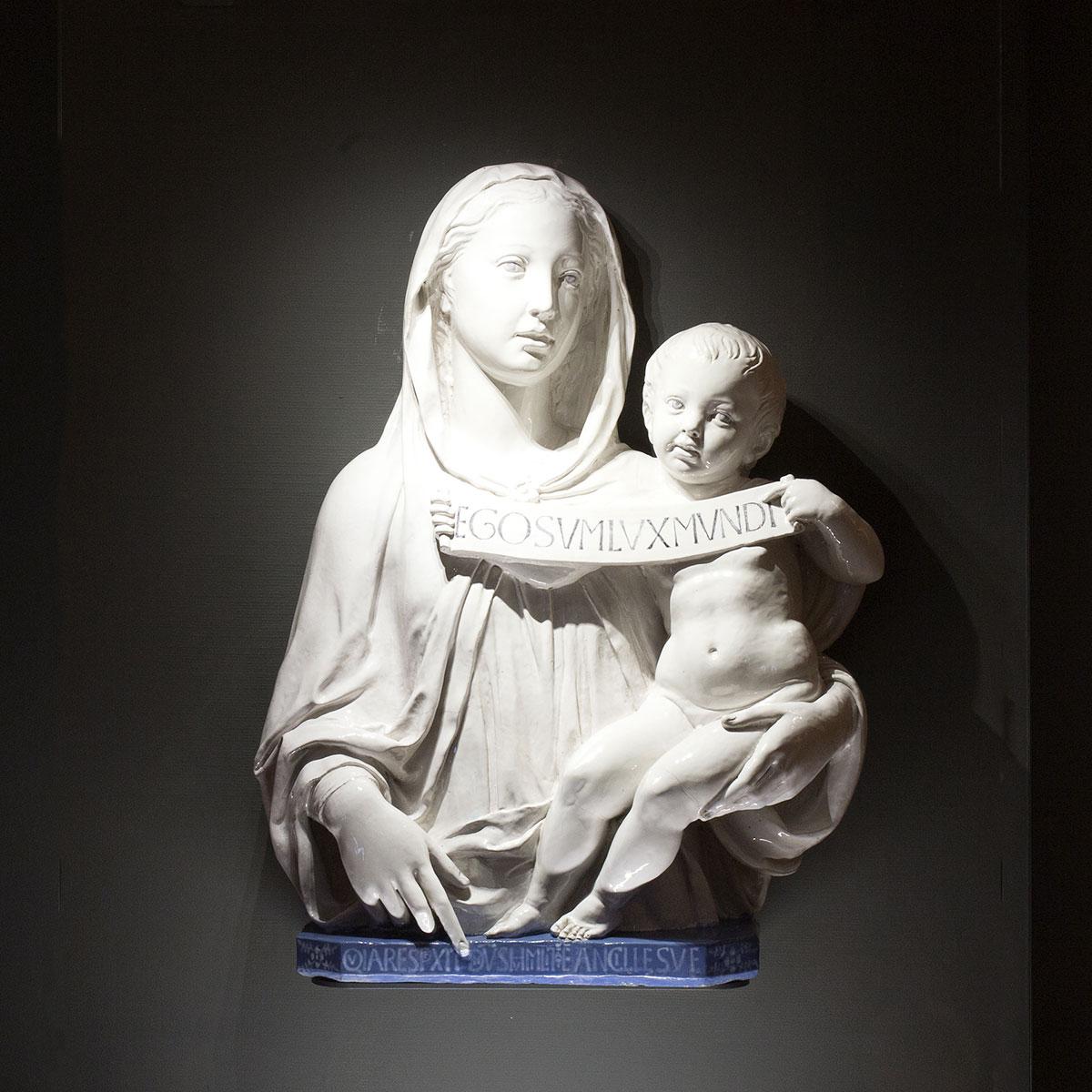
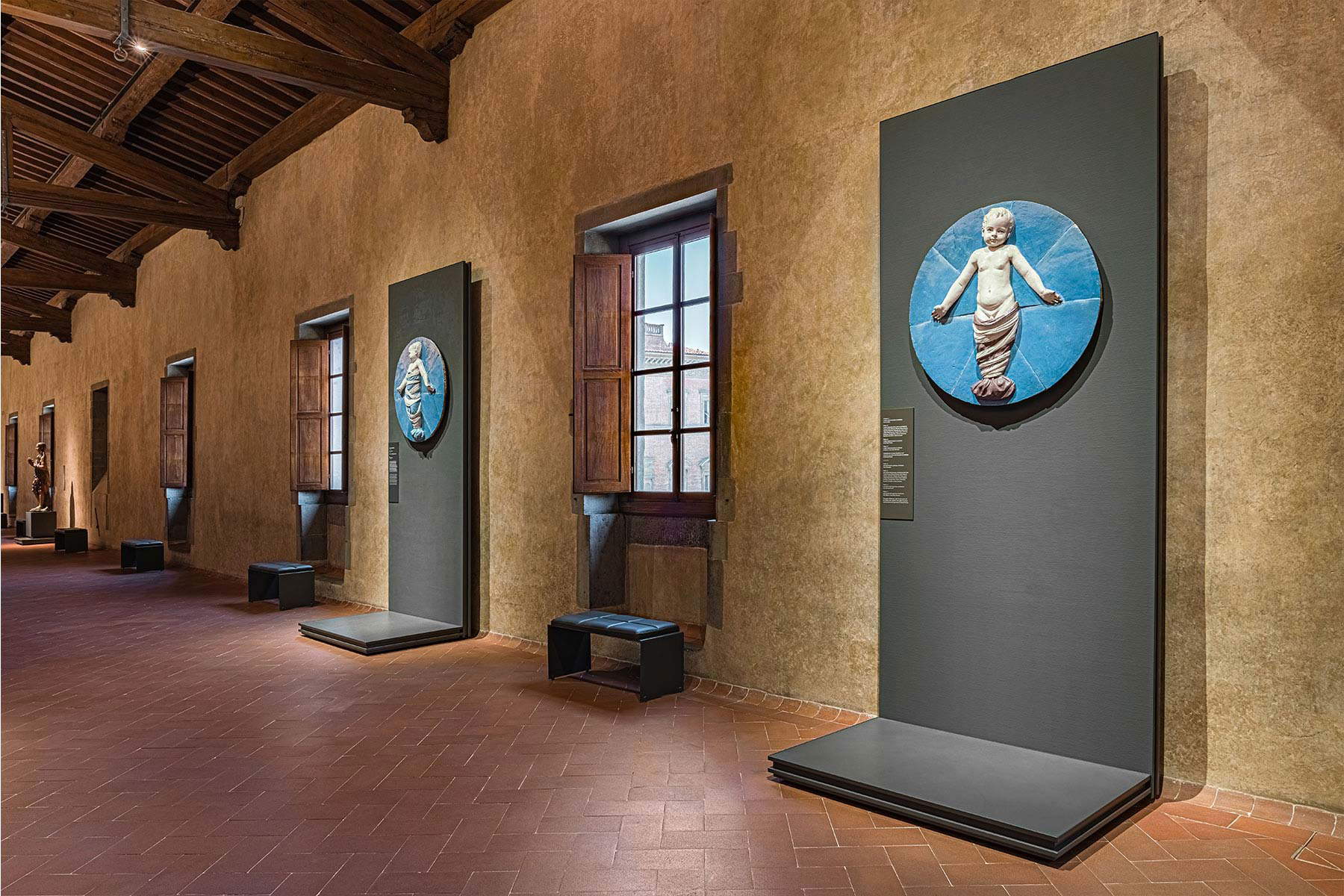
Brunelleschi’s layout has undergone major tampering over the years, altering the original layout of the building and destroying its organicity. Changes and transformations that trace the six hundred years of life of the Institute, which since its inauguration in 1445 has worked uninterruptedly to welcome and educate Nocentines. From the moment of its founding, in fact, the structure offered shelter to children, who were abandoned inside the Pila, a stoup placed outside the loggia where mothers could lay their infants, to which was later added a iron window, wide enough for an infant, but not a toddler, to pass through, where Putti with cartouches by Agnolo Gori were made in 1660, all around. In the same year the stack was replaced with the so-called rota degli Esposti, which allowed the child to be left without the people inside being able to recognize the parent.
The decision to use part of the institute’s rooms to display the cultural heritage acquired over the centuries was made in 1853, although the museum did not open to the public until 1890, with the installation of three rooms on the first floor, in the area of the Cortile delle Donne, where sixty-seven works from the collection were presented. Thanks to a later expansion, works previously kept in the adjacent church, such as the wonderful altarpiece painted by Domenico Ghirlandaio with The Adoration of the Magi (14888-89), were also moved inside the museum. Some rooms on the first floor were damaged in the 1966 flood, and Luciano Berti, director of the Bargello Museum at the time, proceeded to rearrange the collection by moving it to the upper floor, in the Gallery. Among the works on display is Sandro Botticelli’s marvelous Madonna with Child and an Angel (1465), inspired by the work of his master Filippo Lippi, Madonna with Child and Two Angels preserved in the Uffizi Galleries. Also housed inside the museum are sculptures, such as Luca della Robbia’s Madonna and Child (c. 1445-1450), previously located in the Church of the Women, made of glazed terracotta. The Putti by Andrea della Robbia placed on the loggia are made with the same technique, two of which are displayed inside the museum for conservation reasons. In 2009 a project, concluded in 2016 with the reopening of the museum, was launched to enhance the Spedale, which led to the creation of three thematic itineraries that illustrate all facets of this institution that offers a unique cultural heritage, from its history, to the places where it developed, to the works related to them.
The museum is located in the heart of Florence, near the Duomo, and can be reached by bus from La stazione di Santa Maria Novella with ATAF numbers 6 and 14, from La stazione di Campo di Marte with ATAF numbers 6, 31 and 32, from Campo di Rifredi station with theATAF number 20 or from L’aeroporto Amerigo Vespucci with tramway line T2 and ATAF number 23, getting off at the stop Istituto degli Innocenti“ or ”Santissima Annunziata" . The Spedale is about a twenty-minute walk from Santa Maria Novella Station, while it cannot be reached by car, being located in a ZTL area. Tickets and schedules can be found directly on the website.
 |
| Florence, the Museo degli Innocenti and its unique history |
Warning: the translation into English of the original Italian article was created using automatic tools. We undertake to review all articles, but we do not guarantee the total absence of inaccuracies in the translation due to the program. You can find the original by clicking on the ITA button. If you find any mistake,please contact us.



























